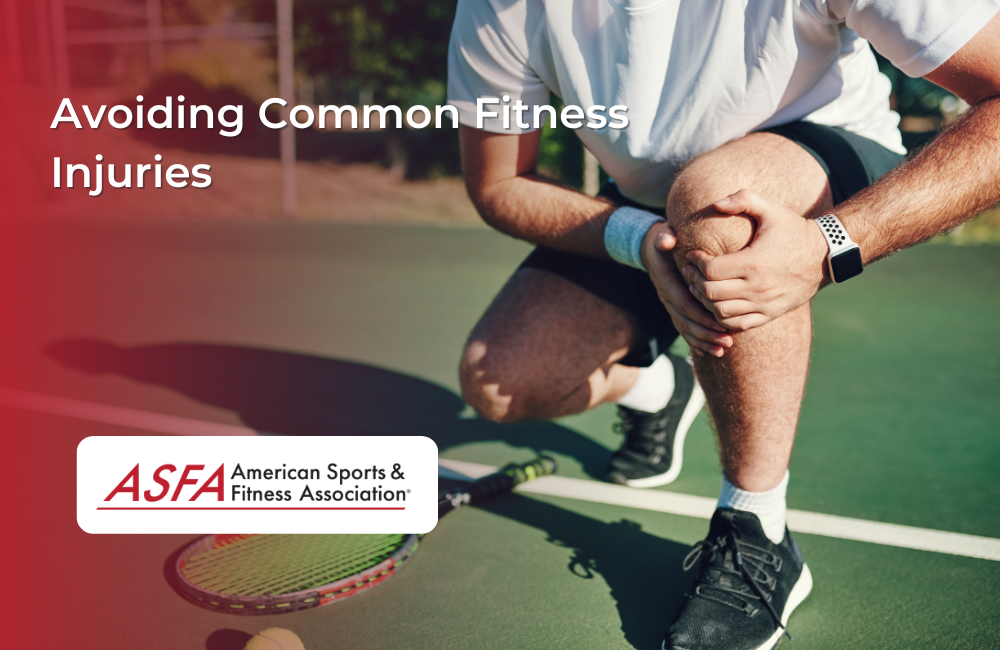If you're like me, you've had at least one injury that keeps rearing its ugly head. I have a torn meniscus in my knee that's been an ongoing issue for the past four years. After taking care of the problem, it would clear up for a few months before coming back again. Sometimes these injuries get worse before they get better, but there are ways to minimize your risk of getting injured in the first place. Here are some common chronic injuries and how you can prevent them:
Tennis elbow
Tennis elbow is a condition that causes pain and tenderness in the tendons at the outer side of your elbow. The injury occurs when you use your forearm muscles too much, especially during sports activities such as tennis or golf.
To prevent tennis elbow:
- Slowly increase the intensity of your workouts over time so that your body gets used to it before increasing it further. This will help prevent overuse injuries like tennis elbow or shin splints (see below).
- Strengthen all muscles around this area by doing exercises such as push-ups, planks, and forearm curls with light weights every day until your pain goes away completely
Shin splints
Shin splints are a painful condition caused by inflammation of the muscles and tendons that connect your lower leg to your toes. Shin splints are common in people who participate in running, soccer, basketball, tennis, or other sports that involve repetitive stress on the legs.
Stress fractures are tiny cracks that develop in a bone, usually because of repetitive stress or sudden impact. Stress fractures generally occur when you have a sudden increase in physical activity or begin training on hard surfaces
Stress fractures
Stress fractures are a type of bone injury that occurs when the bone is subjected to repetitive stress. They're most common in the foot, ankle, and lower leg, but can also occur in any bone in your body.
As you age, your bones become less dense and more prone to breaking under pressure or impact--especially if you're not getting enough calcium or vitamin D from food or supplements. You may also be at risk for stress fractures if you're training too hard for your fitness level, which happens when you increase mileage too quickly without giving muscles time to recover between workouts. Stress fractures often occur gradually over time rather than suddenly out of nowhere; they start off small but become more obvious as they worsen over time until finally breaking through completely (a condition called "crepitus").
Runner's knee or patellofemoral pain syndrome is a common injury among runners, cyclists, and other athletes who engage in activities where repeated jumping motions place high demands on their knees' patellar tendon attachments near where they attach onto either side of each femur's inner thighbone (femur). It causes pain behind one knee cap after prolonged periods standing up straight without bending both legs together into what looks like an exaggerated curtsy position; pain usually gets worse with walking downhill on uneven ground; swelling may occur around either kneecap due to inflamed tendons rubbing against cartilage underneath it
Runner's knee or patellofemoral pain syndrome
Patellofemoral pain syndrome (PFPS) is a common cause of knee pain in runners. It occurs when the patella (kneecap) does not track correctly in its groove, causing friction and irritation around the joint.
This can be caused by many things: tightness in the muscles around your hips, hamstrings, or quadriceps; flat feet; weak glutes; overuse from running too much mileage too soon without proper cross-training; poor footwear choices (for example, wearing worn-out shoes with poor cushioning); or improper form while running downhill or on uneven surfaces like trails or stairs.
Symptoms include pain on the front of your knee with swelling and stiffness after prolonged periods of activity such as walking up stairs or hills--especially if you have flat feet! If left untreated PFPS can lead to more serious issues such as arthritis so it's important to see an orthopedist ASAP if you think this might be what's going on before it gets worse!
Achilles tendonitis and tendinopathy
Achilles tendonitis is an inflammation of the Achilles tendon, the large tendon that connects your calf muscles to your heel bone. Tendinopathy is a general term for an injury that causes pain and inflammation in a tendon. Runner's knee, also known as patellofemoral pain syndrome (PFPS), is a common condition that causes pain under and around your kneecap. Stress fractures are tiny cracks in a bone caused by repetitive stress or force on bones that are not used to bearing weight on them regularly
Takeaway:
- Avoiding common fitness injuries is a matter of knowing the risks, and taking the necessary precautions to avoid them.
- If you have an injury, it's important to seek treatment right away. Don't try to wait it out or deal with it on your own; this can make your recovery more difficult and delay when you'll be able to resume normal activity again.
- In order for your body to heal properly after an injury, it needs rest--but that doesn't mean staying home from the gym! Try cross-training (switch-up activities) or working at lower intensities until you're able to return fully to your workout routine again.
Conclusion
By taking the time to learn about common injuries and how to avoid them, you can avoid many of the problems associated with exercise. If you do experience an injury, don't panic! There are many ways that you can treat these issues without having to stop working out altogether--and most importantly, remember that rest is just as important as exercise when it comes time for recovery.





